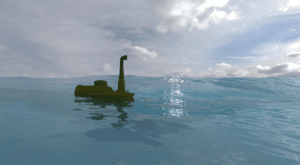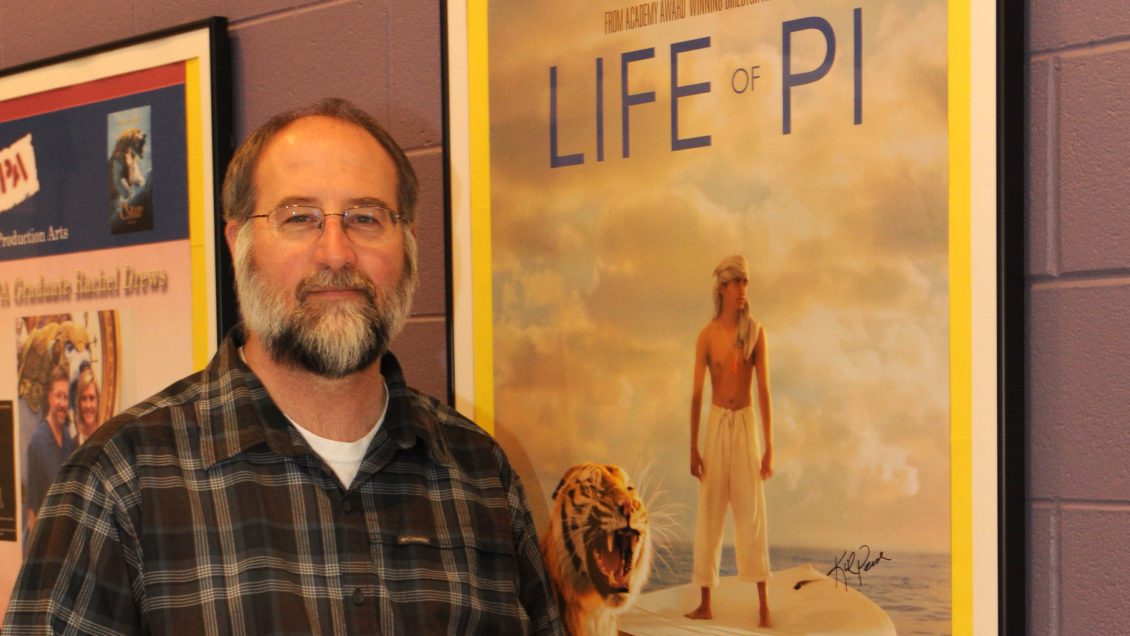The Clemson University professor who helped create digital waves for the blockbuster film “Titanic” is back in familiar waters with a simulator that he and his students are using to bring ocean scenes to life.
Jerry Tessendorf, a professor of visual computing, and his students have developed a simulator, Gilligan, they use for teaching, research and film production. Gilligan helps simulate and render clouds, ocean surfaces and the surfaces’ interaction with boats and other objects.
“The goal is to generate as much of the natural environment as possible,” Tessendorf said. “It’s a continuous work in process.”
Amy Apon, the C. Tycho Howle Director of the School of Computing, said that Gilligan is a testament to Tessendorf’s creativity and deep experience in visual effects.
“Gilligan is helping his students learn the skills they need to succeed in industry while helping solve research challenges with their partners,” Apon said. “With Dr. Tessendorf, Clemson students have a unique opportunity to learn from an internationally renowned visual effects scholar.”

The kind of images created with Gilligan not only help breathe life into movies and video games. Tessendorf and his team have also started applying Gilligan to engineering and remote-sensing challenges, especially those faced by the U.S. Navy.
“They want to look out to the horizon and see what’s out there and what’s underwater,” he said. “It’s not even that you’re necessarily looking for bad guys. There are billions of dollars invested and thousands of people on board ships. You want to protect them, and the open ocean is a dangerous place. The more you know about that environment, the better.”
Tessendorf and a team of about 25 students started assembling Gilligan four years ago, using a mix of new code and software components that were already available.
Since then, students have used Gilligan to create whitecaps on waves, 3D images of clouds and a toy submarine poking its periscope out of the water, to name a few examples.
Among those students is Reagan Burke, who received his Bachelor of Science in computer science from Clemson, studied with Tessendorf for a master’s in Digital Production Arts and is now pursuing a Ph.D. with him.
“I decided to stay for my Ph.D. because I think there is a lot more that I could learn,” Burke said. “Of all the people to teach me these things, he’s the most qualified in my opinion.”
For starters, Tessendorf has an unparalleled resume that includes an Academy Award. He was part of the Rhythm and Hues Studios team that won a technical achievement award in 2008 for a system that allows artists to create realistic animation of liquids and gases.
He has also helped create the visual effects for several major motion pictures, most recently “Life of Pi,” which won a 2013 Academy Award for best visual effects.
The graphics techniques students are learning with Gilligan could help them develop software or use software to do artistic things, Tessendorf said
It’s a strong background for students who would like to work in video games, engineering or remote sensing, he said.
“We’re straddling a lot of different disciplines,” Tessendorf said.
Tessendorf is drawing from his varied background to create Gilligan. He received his Ph.D. in theoretical physics from Brown University in 1984 before working on remote sensing in industry. He began his visual effects career in 1996 and joined Clemson in 2010.
Tessendorf said what he likes best about his work is solving hard challenges, and his team has a new one they are tackling with Gilligan.
They are trying to replicate how light reacts to clouds and the atmosphere, a physical
phenomena called multiple scattering of light.
“That’s really hard to do computationally– to do it really accurately and flexibly,” Tessendorf said. “We’re working on building techniques to do it at resolutions that will be good for these kinds of images and yet not take years of computer time to do.”
Gilligan is named for “Gilligan’s Island,” a sitcom about two crew members and five passengers who set out on a three-hour tour and end up shipwrecked on an uncharted tropical island.
Students wanted a name that was fun and tropical, Tessendorf said. It was also convenient because projects done with Gilligan could be named for the show’s characters.
Some of the names that have been taken include Mary Ann, Thurston and Grumby, a reference to the Skipper. Several remain available, including Professor.
Get in touch and we will connect you with the author or another expert.
Or email us at news@clemson.edu

